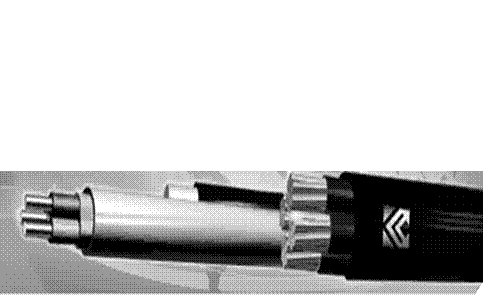Useful terms. Read and memorize the following words and word combinations
Федеральное агентство по образованию
Государственное образовательное учреждение высшего профессионального образования
«Томский политехнический университет»
А.М. Евсеева, С.В. Жаркова, В.С. Ким
АНГЛИЙСКИЙ ЯЗЫК
Учебное пособие по профессиональному иностранному языку
модуль «Электротехническое материаловедение»


Издательство ТПУ
Томск 2006
УДК 802.0:621.3.002.3 (075,8)
ББК Ш143.21-923
Е 25
А.М. Евсеева, С.В. Жаркова, В.С. Ким
Е 25 Английский язык: учебное пособие по профессиональному английскому языку, модуль «Электротехническое материаловедение» – Томск: Изд-во ТПУ, 2006. – 92 с.
Учебное пособие по профессиональному английскому языку «Электротехническое материаловедение» предназначено для студентов III курса электротехнических специальностей, изучающих модуль «Электротехническое материаловедение» в объеме 14 часов.
Цель пособия – подготовка студентов к практическим занятиям по английскому языку с преподавателем профилирующей кафедры, к обсуждению тематики модуля на английском языке. Цель достигается путем введения и отработки основной терминологии модуля и повторения необходимого грамматического материала.
Система упражнений направлена на развитие навыков и умений чтения, аудирования и говорения в рамках заявленной тематики.
УДК 802.0:621.3.002.3 (075,8)
ББК Ш143.21-923
Рекомендовано к печати Редакционно-издательским советом
Томского политехнического университета
Рецензенты
Кандидат технических наук, доцент, зав.кафедрой ЭИКТ ЭЛТИ ТПУ
Леонов Андрей Петрович
Кандидат филологических наук, доцент кафедры английской филологии Томского государственного педагогического университета
Лозинская Раиса Григорьевна
Ó Томский политехнический университет, 2006
Ó Оформление. Издательство ТПУ, 2006
Ó Евсеева А.М., Жаркова С.В., Ким В.С., 2006
UNIT I
MAGNETISM
Text I
Useful terms. Read and memorize the following words and word combinations.
attract притягивать
bismuth висмут
carbon graphite углерод в форме графита
charged particles заряженные частицы
cobalt кобальт
Curie temperature температура Кюри
diamagnetic materials диамагнитные материалы
electric circuit электрическая цепь
ferromagnetic materials ферромагнитные материалы
flow течь, поток
gadolinium гадолиний
iron железо
living tissue живые (животные) ткани
Lorentz force сила Лоренца
magnetic field магнитное поле
magnetic flux магнитный поток
magnetic force магнитная сила
nickel никель
repel, repulse отталкивать
spin вращение, спин
2  Work in pairs. Discuss with a partner the following items. While speaking use the given expressions.
Work in pairs. Discuss with a partner the following items. While speaking use the given expressions.
- Magnetic field origin
- Magnetic flux determination
- Interaction of magnets
- Magnetic materials
| I believe … | To begin with … |
| In my opinion… | Firstly … |
| I think … | Secondly … |
| In my view … | Thirdly … |
| From my point of view … | Finally … |
| It seems to me that … |
3  Read the text and check your ideas.
Read the text and check your ideas.
Magnetism
Magnetism is a force that acts at a distance and is caused by a magnetic field. This force strongly attracts ferromagnetic materials such as iron, nickel and cobalt. In magnets, the magnetic force strongly attracts an opposite pole of another magnet and repels a like pole.
A magnetic field consists of imaginary lines of flux coming from moving or spinning electrically charged particles. Examples include the spin of a proton and the motion of electrons through a wire in an electric circuit.
 The lines of magnetic flux flow from one end of the object to the other. By convention, we call one end of a magnetic object the N or North-seeking pole and the other the S or South-seeking pole, as related to the Earth's North and South magnetic poles. The magnetic flux is defined as moving from N to S. The magnetic flux, symbol Ф, produced by a magnet or electromagnet is a measure of the magnetic field and has the unit of the weber (Wb). Magnetic flux is the product of the average magnetic field (B) times the perpendicular area (A) that it penetrates. That is: Ф=BA
The lines of magnetic flux flow from one end of the object to the other. By convention, we call one end of a magnetic object the N or North-seeking pole and the other the S or South-seeking pole, as related to the Earth's North and South magnetic poles. The magnetic flux is defined as moving from N to S. The magnetic flux, symbol Ф, produced by a magnet or electromagnet is a measure of the magnetic field and has the unit of the weber (Wb). Magnetic flux is the product of the average magnetic field (B) times the perpendicular area (A) that it penetrates. That is: Ф=BA
The magnetic field of an object can create a magnetic force on other objects with magnetic fields. That force is what we call magnetism.
When a magnetic field is applied to a moving electric charge, such as a moving proton or the electrical current in a wire, the force on the charge is called a Lorentz force.
When two magnets or magnetic objects are close to each other, there is a force that attracts the poles together.

Magnets also strongly attract ferromagnetic materials such as iron, nickel and cobalt.
When two magnetic objects have like poles facing each other, the magnetic force pushes them apart.
Magnets can also weakly repel diamagnetic materials.